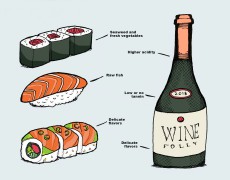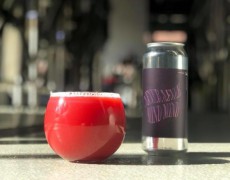For too long sake has been overboiled in restaurants across America, we'll walk you through how to find the right temperature based on what's in your glass.
BY ANNA LEE C. IIJIMA.

Photo by Penny De Los Santos
Thanks to decades of overboiled sake at neighborhood sushi joints across America, people tend to think of it as a beverage served hot and cheap.
But in Japan, sake is celebrated for its ability to express aromas, flavors and textures at a variety of temperatures. In fact, sake temperature is so important that a lexicon exists just to describe it. At 23˚F to 32˚F, mizorezake is chilled until a snowy haze of ice forms. Hinatakan is warmed as if by sunlight, to about 86˚F to 90˚F. Tobikirikan, at around 130˚F, is so hot that it might make you jump.
Most sake is good at a range of temperatures, but certain styles are more flexible than others. For example, highly aromatic, superpremium ginjo or daiginjo sake is typically served around 55˚F to preserve its fruity, floral perfume.
Less aromatic or more savory and earthy styles of sake can be enjoyed at almost any temperature. Honjozo (which has added alcohol), umami-rich styles like yamahai or kimoto, and savory examples of junmai (without added alcohol) are all excellent candidates for experimentation.
What to Try
Nancy Cushman, co-owner/sake sommelier at O Ya Japanese restaurants in Boston and New York City, recommends a few of her favorite bottles for temperature experimentation.
When chilled, Shichi Hon Yari’s Junmai “has amazing truffle and mushroom earthiness on the palate and nose… When warmed, it becomes softer and lusher in texture, and the flavors sweeten up,” she says.
Hakkaisan’s Tokubetsu Honjozo, Cushman says, has “beautifully crisp and clear” notes of rice. Warmed, it gains “an extremely smooth, silky texture that amps up the umami and broadens out on the palate.”
Hot Sake DIY
The key to warming sake is to increase temperature gently yet swiftly, being sure not to boil or simmer away aromas and flavors. The best and most traditional method is to place a heat-safe vessel filled with sake in a hot-water bath. Use a thermometer to track the temperature. As a shortcut, microwave sake in 30-second intervals to avoid cooking it.
Source: winemag.com












